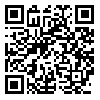BibTeX | RIS | EndNote | Medlars | ProCite | Reference Manager | RefWorks
Send citation to:
URL: http://jdm.tums.ac.ir/article-1-216-en.html
Background and Aim: Bleaching products as chemical materials can exert side effects on soft and hard tissues and existing restorative materials with oxidizing mechanism. The aim of this study was to evaluate the effect of 15% and 35% carbamide peroxide gels as home and in-office bleaching agents respectively, on microhardness and surface topography of composite resin.
Materials and Methods: In this in vitro study, a total of 75 disc shaped specimens were prepared from Z100 composite resin (3M) and randomly divided into three groups with following treatment designs: group 1, 370C distilled water, group 2, 15% carbamide peroxide, 6 hours/day for 3 weeks, group 3, 35% carbamide peroxide 30 minutes/week for 3 weeks. The microhardness (Vickers hardness) of samples was measured using Shimadzu set on three different points of each sample. 8 samples of each group were selected randomly to be assessed by scanning electron microscopy (SEM) for probable changes in surface topography. Data were analyzed using one way ANOVA and Duncan tests with p<0.05 as the level of significance.
Results: 15% carbamide peroxide group had the maximum amount of microhardness (84.59±1.87) and 35% carbamide peroxide group had the minimum (76. 14±1.77). Only the difference between home bleaching and control group was not statistically significant (P=0.24). The SEM assessing revealed no changes in surface topography.
Conclusion: Based on the results of this study, in-office bleaching may decrease the microhardness of composite resin.
Received: 2006/12/30 | Accepted: 2007/06/24 | Published: 2013/08/19
| Rights and Permissions | |
 |
This work is licensed under a Creative Commons Attribution-NonCommercial 4.0 International License. |




